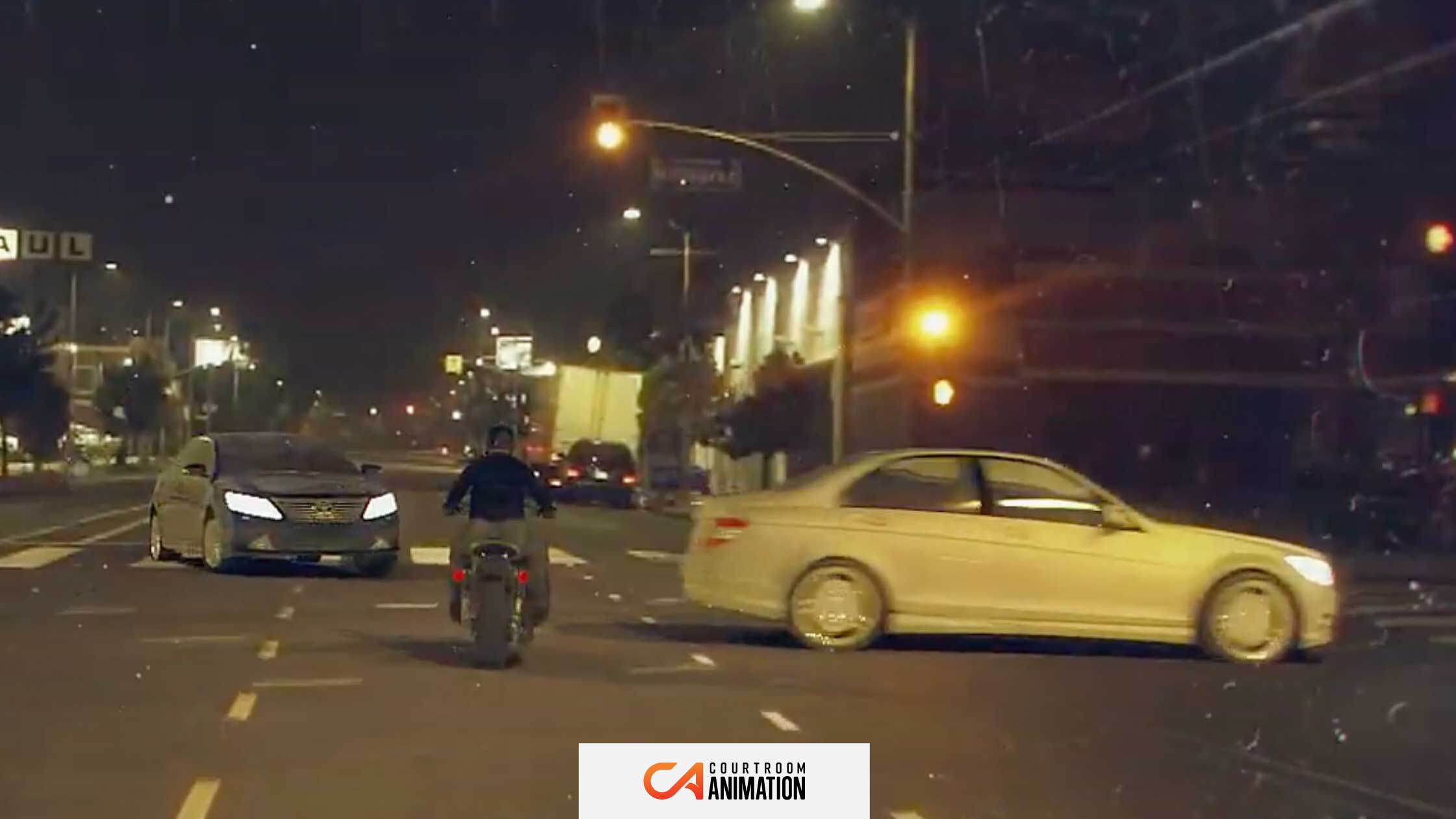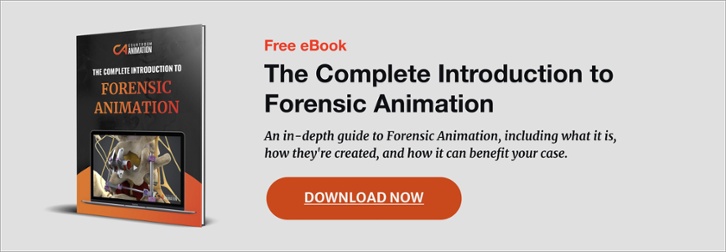
One of the key capabilities of forensic animation companies like Courtroom Animation involves taking video evidence and turning it into an engaging and easy to understand animation. A limitation of video is that it’s essentially a series of pictures in a flat, 2D type of media. Forensic animation companies can take those series of images and increase their impact by showcasing them in a 3D format. This allows viewers to see relationships between objects, timing, different perspectives, and other real-world aspects.
There are many ways legal animation companies can create exhibits with techniques that might surprise you. These techniques, however, aren’t the ones you see on TV. Unfortunately, the real world isn’t CSI: Miami. Forensic specialists can’t take a video frame and magically enhance the quality.
Our team of forensic animators can recreate an event based upon expert analysis and plethora of data to visualize your clients story in a way that engages your audience.
Problems to Overcome
More often than not, there are multiple problems to overcome with video. The number one problem with surveillance cameras is poor quality. Oftentimes video and surveillance cameras are outdated, have poor resolution, and are unable to capture events at night and or in low light. Even if you have video evidence from a high-resolution 4K camera, often the entirety of an incident isn’t recorded leaving gaps in your client’s story that require a visual recreation.
For example, critical events often take place a distance away from a surveillance camera filling a small area of the screen, so even if you zoom in, the quality is still poor. Most people know about resolution problems, but some other key issues can arise as well, including:
- Blurry pictures with saturation and other color issues can make the footage difficult to understand.
- Incorrect timing. Lower-end cameras tend to have frame rates that aren’t fluid, making it difficult to determine how fast someone or something is moving.
- Incorrect aspect ratio. Vehicles or bodies can be stretched out. Shapes can be distorted. Skewness can make understanding timing and relationships between objects difficult.
- Perspective issues. The wider the angle, or the more curved the lens is, the more distortion there is in a video (e.g., police body cam videos).
- “Missing” action, or when the action takes place behind something or just out of frame. Everything else is caught on camera besides the moment the incident happened.
- Shakey video. Often people record surveillance footage with their phones. A video of a video can be difficult to watch.
The Foundation of 3D Models
There is a lot that goes into creating 3D models, but let’s start with the basics so you can understand how it works. Forensic animation companies will typically start with a laser scan of the area where the incident took place. You might have seen people on the side of the road with cameras that spin 360 degrees. Those are laser cameras, and they collect hundreds of millions of data points from a surrounding environment.
From those data points, which are accurate to the millimeter, animators can build 3D models. This makes the scene cleaner and easier to understand. With that strong foundation, vehicles, textures, material properties, and lighting are added to create a realistic environment. This is a tried and true way of recreating an environment and one that forensic animation companies rely on.
Matching Videos
Video evidence doesn’t just have to come from surveillance video. Nowadays, smartphone and bodycam footage is often available to be used as evidence, so there are often multiple recordings from the event that took place. This allows forensic animation companies to analyze different positions of people and distance relationships. They can start with laser scanning the location so they can match the video footage with the area. Using photogrammetry, they’re able to get a perfect match. From there, they can recreate the event.
What’s different about a camera that someone is holding compared to a surveillance camera, is that animators can see where the person was standing at any moment. Here is an example:

Hundreds of frames can be analyzed, but here you can see eight frames showing where the person filming was standing. This tells us exactly where each frame was at each moment in the recording. This is a powerful concept, especially when it comes to validating/invalidating someone’s point of view, perspective, or witness statement.
The same concept can be applied to vehicles. Dashcam footage can be analyzed to show exactly how fast someone was traveling at certain points on their route.
Factors to Consider When Hiring Forensic Animation Companies
Be Prepared
It’s important to have a general idea of what the key themes from your case are that you want to visualize. A healthy collaborative process should take place at the start of each project to help you work through this, especially if you are unsure what will most impact your audience. An effective animation team will be able to drive your animation in the right direction. It does not matter if you create a visual before mediation begins or if the case has been in progress for a few weeks.
Helpful tip: Use this free checklist before you meet with an animator to get started.
If you keep in mind the key points of your case, you can better maximize the value and effectiveness of your custom 3D forensic animation. In short, you’ll want to think about the main focus you are most concerned about a juror understanding before you have a meeting for maximum effectiveness.
Budgeting for Forensic Animation
So how do you determine your budget for forensic animation? One thing to consider is the duration of your animation. For example, a ten second or two minute video can make quite a difference in the overall cost. Professional forensic animation companies will guide you through a collaborative bidding and animation design process. This fleshes out the most important arguments of your case, and creates custom exhibits catered to each of the key themes that need to be visualized. There are many variables and legal factors that go into animations, so you want a dedicated animator that you can rely on.
Finally, while we’ve focused a lot on jury trials, don’t forget that forensic animations also work great in mediation. You can quickly reach a favorable settlement for your client using powerful exhibits like the ones Courtroom Animation creates. So if you’re ready to talk to a case specialist, get a quote today!

Topics: